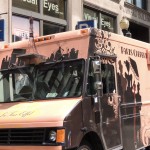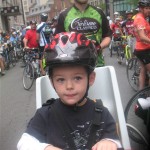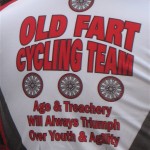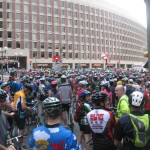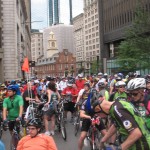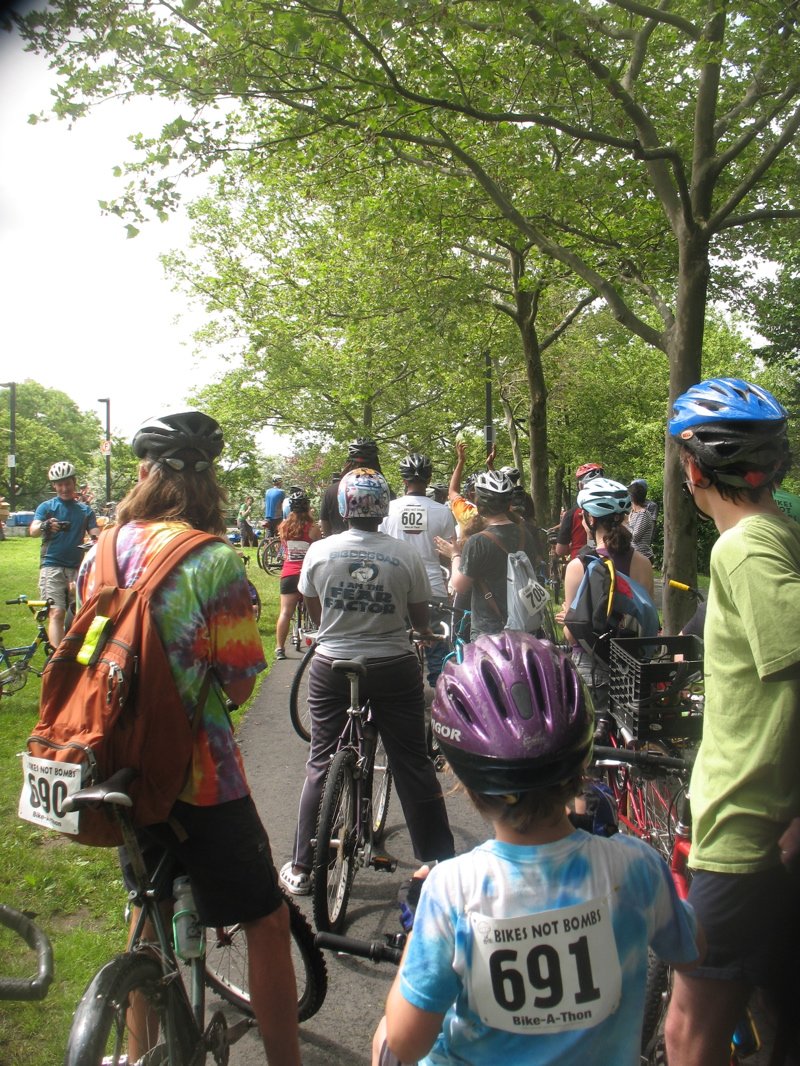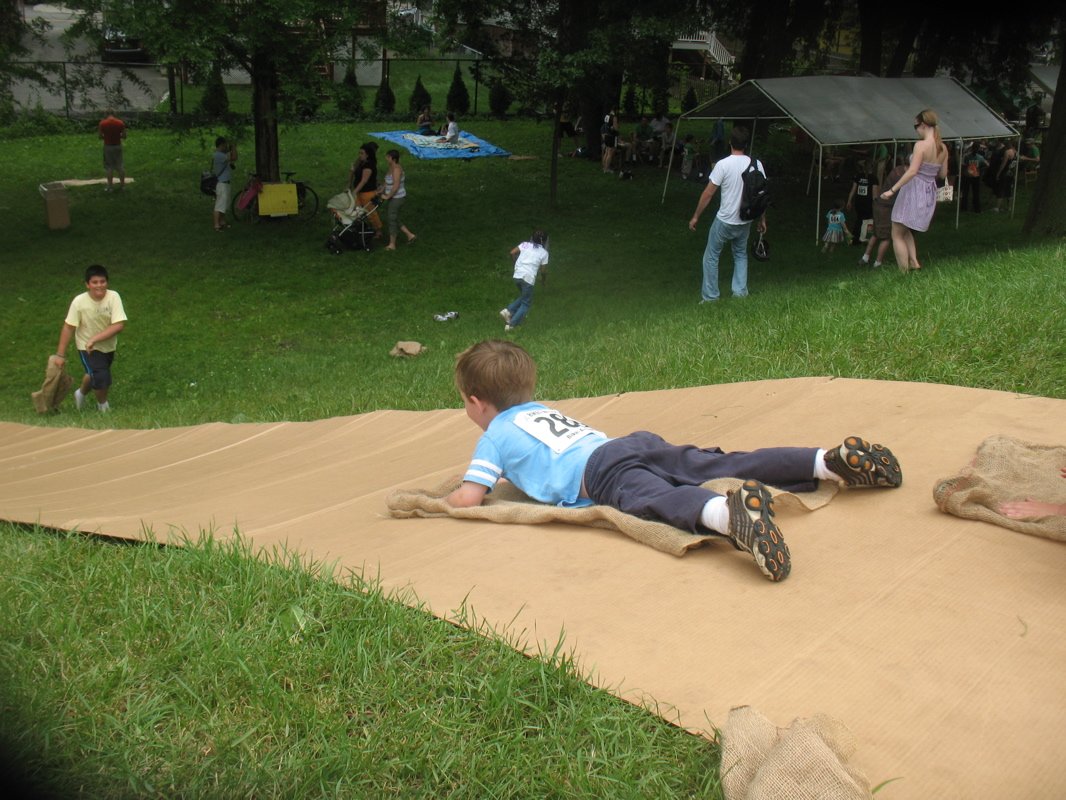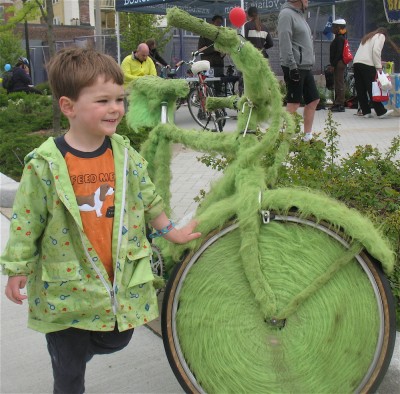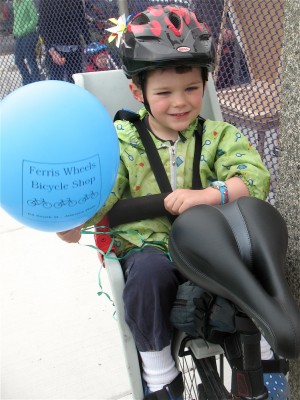I live in the Forest Hills neighborhood of Jamaica Plain in the city of Boston. The neighborhood on the whole is a great place to live as it features diverse people of different backgrounds and social scale, a wide variety of attractive housing, interesting and successful local business, access to public transit and bike paths and lots of parks and green space. One scar on this great neighborhood is the area immediately around the Forest Hills T Station. In the shadow of a large highway overpass carrying cars on the Arborway there are large parking areas, derelict empty lots, and depressed-looking commercial and industrial places. Plans are afoot to revitalize this area such as redeveloping the MBTA’s Arborway Yard and building new transit-oriented housing and commercial space directly around the T station. While these plans seem to be on hold due to the current state of the economy, plans to remove the elevated highway known as the Casey Overpass appears to be going forward.
I heartily welcome the removal of this eyesore which is both overbuilt for the traffic it carries and a detriment to the neighborhood. Unfortunately, there is a movement afoot to create an auto-centric solution by rebuilding the overpass which I believe would bode poorly for the future of the neighborhood as well as for anyone who wishes to navigate the area below the bridge on foot, by bike, on public transportation, and even by car. Several organizations such as LivableStreet, WalkBoston, The Emerald Necklace Conservancy, MassBike, the Boston Cyclists Union, and JP Bikes have come out in favor of an at-grade city street option to replace the current overpass. Below is a copy of my letter to Thomas Broderick, acting chief engineer of MassDOT, explaining my reasons for supporting the at-grade option. If you live in Jamaica Plain, Roslindale or elsewhere in Boston and would like to help spur the economic development of Forest Hills by making it livable for all users – pedestrians, cyclists, and transit users as well as motorists – please consider writing a letter yourself (the BCU provides a good template) and attending future public meetings to support an at-grade city street.
Dear Mr. Broderick,
I am a resident of the Forest Hills neighborhood in Jamaica Plain and commute through the intersection below the Casey Overpass on a daily basis by foot, bicycle, public transportation and by automobile. I welcome the news that the crumbling and overbuilt Casey Overpass must be demolished and could be replaced with an at-grade city street. This approach would help reconnect the Emerald Necklace, create new public space, allow for better neighborhood development and provide safer connections for bicyclists and pedestrians as well as motorists. Unfortunately, voices are mobilizing to encourage MassDOT to take a more expensive and auto-centric approach by reconstructing the highway overpass over Forest Hills. I am writing to offer my support for an at-grade city street connecting the Arborway as the better option for the future of the neighborhood and its residents.
I am aware that traffic engineers in your department have determined that both a bridge and the at-grade option will handle the predicted traffic flow of 2035 in roughly the same way. In light of this I see no reason to build a bridge. In future projects, I believe that the recently consolidated MassDOT would serve Massachusetts better to find ways to hold traffic flow around our fair city to the levels of 2011 or less instead of planning for traffic increases. This could be accomplished in many areas by developing public transportation, a safe connective bikeways network and pedestrian-friendly streets that encourage active transportation and healthier lifestyles.
The current situation under the bridge is quite the harrowing experience for pedestrians and cyclists and even for motorists. The bridge support structure creates blinds spots for turning vehicles and lack signaled left turn lanes making the intersection a frightening place to make a turn. When I commute by bike passing under the Casey Overpass is the most unpleasant part of my ride although necessary to navigate this intersection to get from my home to the Southwest Corridor Bike Path. An at-grade option would mean that the bike path would no longer have to dead end at New Washington St.
With the existing at grade New Washington Street and the access lanes to the highway overpass, pedestrians have to make as many as three crossings in a short distance when walking down Washington or South Streets. The access ramps are particularly dangerous to cross since drivers using them have a “highway mentality” that causes them to exceed the speed limit and not pay attention to walkers and bikers. I find that the overpass and the access lines also contribute to automotive congestion in the morning rush hour as the need to have multiple traffic signals close together causes the traffic flow to back up. In fact, on one occasion I was stuck on a 39 bus for five minutes because a handful of cars snarled up South Street between the two traffic lights under the overpass. An at-grade city street would mean that motorists, buses, bicyclists and pedestrians would only have to navigate one crossing making the street easier and more welcoming for everyone.
I am also concerned of the costs to taxpayers and neighborhood residents that come from constructing a new highway overpass through Forest Hills. The overpass is obviously the more expensive option and would leave little money for improved facilities for bicycling, walking and public transportation that would be possible with the at-grade option. Historically, the Casey Overpass was a decision made in the 1950s when high-speed auto transportation through the city was thought to be the wave the future. This mentality caused considerable harm to Boston such as the Fitzgerald Expressway forced through the heart of the city and paving over James Jackson Storrow’s Embankment parks. Here in Boston and in cities worldwide the idea of urban freeways has been discredited and when elevated highways are removed in cities from San Francisco to Seoul the cities have benefited from increased economic development and reduced automobile congestion. It should also be noted that the Casey Overpasss was rebuilt in the 1980s just 30 years after it was constructed. Now 30 years later it needs to be rebuilt again. The cost of the new overpass would include greater maintenance costs and the very real possibility that in another 30 years we would be in the same situation of repairing and replacing that bridge.
Finally, there are great opportunities to improve the Forest Hills neighborhood from the Arborway Yard to the parking lots and open space around the T station. Examples of economic development in the shadow of a freeway overpass are few and far between and the current development in the immediate area of the overpass reflects the depressing effect of highway infrastructure in a neighborhood setting. Permanently removing the Casey Overpass would be a good first step in encouraging the development of new transit-oriented housing and commercial space that would revitalize Forest Hills as a dynamic bikable, walkable and economically-flourishing neighborhood. With the construction of the new large Co-Op store and other small businesses to join them in the near future, the Forest Hills area is fast becoming a thriving business district, not merely an MBTA transit center located amidst several neighborhoods. It is imperative that traffic is slowed down and adequate long-term access solutions are created to accommodate the increasing numbers of pedestrians and bicyclists.
My approval and support of the at-grade option is contingent on the timely completion of bike paths that will travel up both sides of Washington St. toward Roslindale from the project area, and ending at Ukraine Way where they will be designed to connect to and complement the bike lanes on that street. The construction of these bike paths should be considered as part of the replacement project and completed within the same time frame as that project.
It is also contingent on there being no “slip lanes” at either Washington Street, Hyde Park Avenue or South Street. Slip lanes create dangerous situations for both pedestrians and cyclists due their wider radius turn that allows cars to travel through them at an increased speed. There is no need for speed in this area and in this community we value the safety of our residents over convenience for motor vehicles.
I also support converting Shea Circle into “Shea Square” by creating a normal intersection there. Traffic circles, particularly those handling more than one lane of traffic, have been proven to be particularly dangerous to bicyclists and pedestrians. Further along the Arborway, MassDOT should consider redesigning the large rotary at the intersection with Centre Street. Currently traffic coming from Forest Hills gets backed up by the traffic signal while traffic from all other directions is not signaled and enters directly into the circle with very little congestion. Improved traffic flow for this intersection would help prevent auto traffic from backing up into Forest Hills.
I strongly believe that the at-grade option offers a better future for myself and for the neighborhood I love. Please consider the needs and happiness of all people – residents, pedestrians, public transit users, and cyclists as well as motorists – when planning for the future of Forest Hills.

